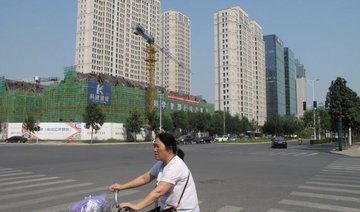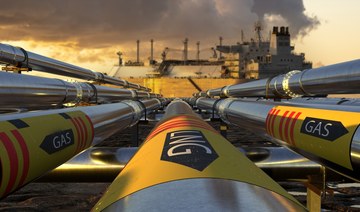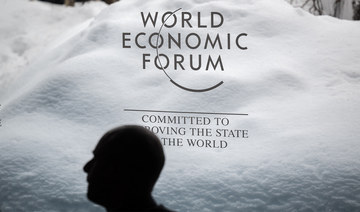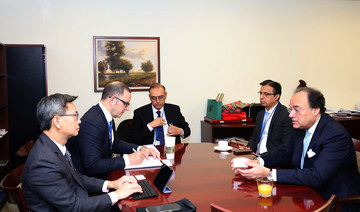TORONTO: Canada’s largest city and one of the world’s hottest property markets has a supply problem.
The nation’s housing agency admits it is not quite sure why soaring prices in Toronto have not spurred more construction.
New homes replace demolished ones at a sharply lower rate than earlier in the decade, completion times for multi-family projects have doubled and prospective buyers have far fewer new homes to choose from than they did only a few years ago.
Part of the reason could be the ambitious growth plan for the greater Toronto area that the Ontario province forged over a decade ago.
With new “density” targets favoring multi-family housing, designated urban growth areas and tougher environmental rules, the 2006 plan sought to check urban sprawl while supporting the area’s further growth as North America’s major economic hub.
The market, though, did not follow that vision.
Detached homes are still most sought-after and their tight supply keeps prices high even as some condominiums and multi-family projects languish.
Developers say the growth plan, updated in 2017 with higher density targets, both created a demand-supply mismatch and added a layer of new municipal regulations.
“The growth plan has throttled growth severely,” said Matthew Cory, principal at planning consulting firm Malone Given Parsons.
Ryerson University economist Frank Clayton said part of the problem was the plan’s emphasis on protecting the environment and heritage sites at the expense of development.
“That superimposed more planning on a planning structure that was already bureaucratic-heavy,” he said in an interview.
Toronto’s troubles are of national concern given its role as Canada’s top financial and technology hub, which, together with surrounding towns, accounts for a fifth of the nation’s economy.
The city, alongside Vancouver, Canada’s third-largest city, is also among top North American destinations for international property investors and a major draw for Chinese capital.
So far, the authorities have sought to cool what they call speculative demand with stricter lending rules and by taxing foreign buyers. Now they also begin to look at supply bottlenecks as a driver for prices that have risen by 43 percent in Toronto and 63 percent in Vancouver just over the past three years.
“If I were concerned about anything from a long-term housing market point of view, it’s the supply of housing in Toronto and Vancouver,” Evan Siddal, the head of the federal housing agency, the Canada Mortgage & Housing Corporation, told Reuters.
“We’re replacing houses in Toronto at a much lower rate than we were five or six years ago,” he said.
The agency’s data, first published by Reuters, show just over 20 new homes were built in Toronto for each one demolished in 2016, down from around 70 to one in 2011.
Data from property research firm Altus Group offered a different perspective: It estimated last year prospective buyers had about 11,000 properties to choose from in the greater Toronto area, less than half the level of just two years earlier.
Siddal said “simpler, more flexible” approval procedures would help, but developers were also contributing to the bottlenecks by “land banking” — delaying projects in anticipation prices will rise further.
In a report this month, the agency said that it needed more data to fully understand the factors behind supply constraints.
Industry representatives said complex regulation, rather than speculation, drives the delays.
Michael Pozzebon, vice president of low-rise developer DG Group, said his firm used to sell houses once it got approvals because in the past it knew how long projects would take.
“To sell at that point now, there’s a risk that we can’t deliver the product on time. So there’s a perception that we’re holding on to land without developing it,” he said.
A 2016 survey of land use regulations by the Fraser Institute, a public policy think-tank, bears out the developers’ assessment. The survey found Toronto was Canada’s most regulated city, with approval times nearly double that in other centers, and the highest compliance costs, followed by Vancouver, Edmonton, Calgary and Montreal.
Developers now have to satisfy about 200 conditions, from protecting at-risk species to transport requirements, to get municipal approval, according to Bryan Tuckey, former head of the Toronto area’s building and developer lobby. That compared with about 25 at the start of the last decade, he said.
East Gwillimbury, a town just north of Toronto, is a case in point.
The plan designated it as a significant growth area, but the municipality is at least six years behind with construction of a new sewage plant needed for the town’s population to grow from 30,000 to 86,000 by 2031. The reason? A municipal funding shortage and delayed environmental assessments by the province, says James Young, town councillor and former mayor.
“Without the servicing, we stop. It’s been very frustrating,” Young said.
Developers said municipal cash is tight in part because planned condominiums take longer than expected to complete, or do not get built at all, and that means less income from development fees that help fund infrastructure.
The municipality acknowledged it depends on development fees to repay infrastructure debt, but said the fees had not played a part in the plant’s delay.
Despite the growth plan’s preference for multi-family housing, such projects can now take more than three years to complete, double the time needed 15 years ago, because of a surge in required documentation, out-of-date municipal zoning bylaws and residents’ opposition to high-rise projects, according to development lobby BILD.
Larry Clay, from Ontario’s Growth Secretariat at the Ministry of Municipal Affairs, rejected criticism that there was too much regulation, but said new guidelines due this year will ensure its consistent interpretation by municipalities.
The housing shortage is a tough challenge for Toronto and its surrounding cities, with the Ontario government predicting the area’s population will soar to 9.6 million by 2041 from about 6.5 million in 2016.
A survey published by the Toronto Region Board of Trade this month showed 42 percent of young professionals were considering leaving because of the lack of affordable housing.
Matthieu St-Pierre, a video game developer with a 3-1/2-year-old son, is one of them. With his wife, a marketing employee at the University of Toronto, he now rents a one-bedroom apartment. He is planning to move to Quebec City after a fruitless search for a home large enough for his family within their budget.
“If you have a kid, you need more than 900 square feet of space,” St-Pierre said. Ontario’s focus on higher density housing made sense, he said, but developers skewed toward too many small, one-bedroom units.
Housing is set to play a central role in the provincial election in June with the opposition Progressive Conservatives accusing the ruling Liberal party of contributing to soaring home prices with excessive regulation.
According to an Ipsos survey commissioned by the Ontario Real Estate Association last year, 85 percent of residents want political parties to tackle home affordability and 63 percent want less regulation.
David Caplan, who authored Ontario’s “Places to Grow” plan in 2006 while serving as its infrastructure minister, said it better defined the roles of provincial and municipal governments in planning and aimed for a healthy mix of housing options.
Now, 12 years on, Caplan, currently chief operating officer of the Ontario Road Builders’ Association, has acknowledged the province is still trying to find the right balance between suburban and urban growth.
“It’s still a work in progress.”
ONTARIO’S GROWTH PLAN FOR TORONTO AREA
It is one of the world’s hottest property markets, but Toronto is struggling with supply bottlenecks and developers and some experts claim that a growth plan drawn up for the city may have contributed to the crunch.
Here are the main facts about the Growth Plan for the Greater Golden Horseshoe adopted by the Ontario provincial govenrment to manage the expansion of Toronto and its surrounding areas through 2031.
Created in 2006, it was then updated in 2017 following a 2016 review, and aimed to manage population growth largely through more construction in existing developed areas, locating the highest densities where infrastructure and municipal servicing already are in place and ensuring the protection of agricultural land and the environment.
Key points:
Confine at least 50 percent of growth to already built-up areas with existing or planned water and wastewater systems until 2031, and 60 percent from 2031 onwards.
All municipalities must develop strategies to achieve minimum targets, including identifying strategic growth areas, updating zoning and prioritizing infrastructure investment.
25 urban growth centers, central areas of already built-up towns and suburbs, were identified as focal points for growth with a range of mandated densities per hectare (2.47 acres): 400 people and jobs combined within the City of Toronto, 200 in Toronto suburbs and 150 in centers of outer ring towns.
Greenfield areas should have a minimum of 80 residents and jobs combined per hectare.
Municipalities must develop housing strategies that promote a mix of housing options and densities and establish targets for affordable housing; accommodate the plan’s forecasted growth and density targets; and maintain land with servicing capacity for a three-year supply of housing.
Minimum density targets along transit corridors range from 200 residents and jobs per hectare near subways to 160 around light rail and buses to 150 around the regional public transit system.
Public transit is the first priority for transportation infrastructure planning and investment.
New developments should not harm or disrupt key natural heritage or natural water resources.
Prime agricultural areas identified in official plans should be protected.
Planning for infrastructure corridors should undergo environmental assessments that include impacts on agricultural land, natural heritage features and natural water systems.
Water and wastewater systems should support the plan’s minimum intensification and density targets.
Toronto’s housing supply challenge and the growth plan paradox
Toronto’s housing supply challenge and the growth plan paradox
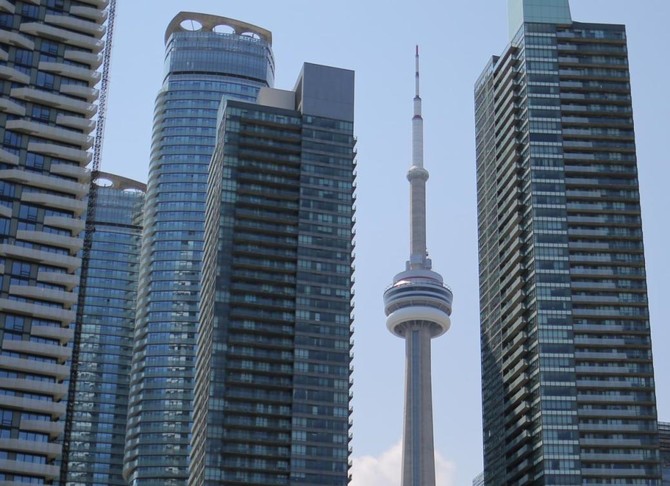
TotalEnergies, OQ to launch $1.6bn LNG Bunkering project in Oman
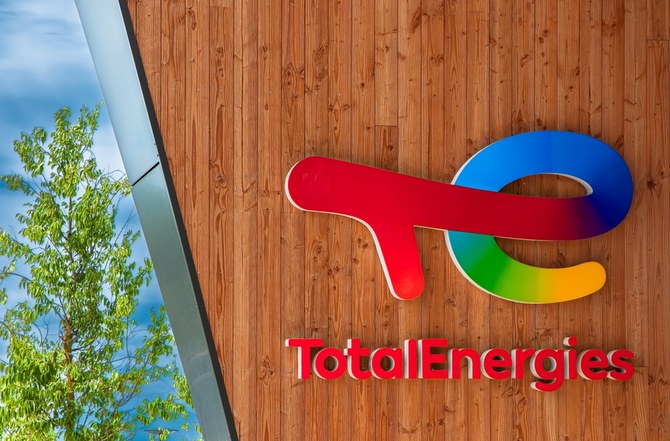
RIYADH: Oman’s Sohar Port is set to house a new $1.6 billion liquefied natural gas bunkering plant following an agreement inked between OQ and TotalEnergies.
Bunkering involves transferring LNG to a ship for use as fuel, offering a cleaner alternative compared to traditional methods such as marine gas oil and heavy fuel oil.
TotalEnergies will provide 80 percent of the investment, with OQ contributing the remaining 20 percent through their joint venture, Marsa Liquefied Natural Gas LLC.
The Marsa LNG project, the first of its kind in the Middle East, is poised to have significant economic implications. It’s expected to bolster Oman’s treasury revenues and enhance local value through collaborative local investments.
Patrick Pouyanne, chairman and CEO of TotalEnergies, said: “We are proud to open a new chapter in our history in the Sultanate of Oman with the launch of the Marsa LNG project, together with our partner OQ, demonstrating our long-term commitment to the country.”
He explained that the innovative project illustrates their pioneer spirit and showcases the relevance of their integrated multi-energy strategy, with the ambition of being a responsible player in the energy transition.
“By paving the way for the next generation of very low emission LNG plants, Marsa LNG is contributing to making gas a long-term transition energy,” Pouyanne added.
The plant, powered entirely by solar energy, is expected to contribute to the reduction of carbon emissions and the shipping industry’s overall carbon footprint. Notably, it is projected to emit less than 3 kg of carbon dioxide per oil equivalent barrel.
“The Marsa LNG project is one of the many initiatives that reflect Oman’s goal of achieving carbon neutrality by 2050,” Minister of Energy and Minerals Salim Al-Aufi said.
Minister affirms Riyadh as global solutions hub ahead of special meeting of World Economic Forum

RIYADH: Riyadh has emerged as a beacon of “thought leadership, action, and solutions,” stated one of Saudi Arabia’s top officials as the Kingdom’s capital prepares to host the World Economic Forum.
Faisal Al-Ibrahim, the minister of economy and planning, made the comments ahead of the summit on global collaboration, growth, and energy for development, slated for April 28 to 29, which aims to empower leaders from both public and private sectors to tackle mutual global challenges.
According to the WEF website, the meeting will also advance key forum initiatives in the region and beyond as it aims to bridge the growing North-South global divide, which has further widened on issues such as emerging economic policies, the energy transition and geopolitical shocks.
“The Crown Prince’s patronage of the World Economic Forum Special Meeting in Riyadh is a testament to our leadership’s determination to convene the world to take action and expand global collaboration on the critical topics of our time,” said Al-Ibrahim in a post on X.
He welcomed global leaders to this pivotal moment for social, economic, and human development, urging them to “build bridges toward a secure, stable and sustainable future.”
Saudi Arabia’s Diriyah Co. unveils its mixed-use commercial office and retail offering Zallal
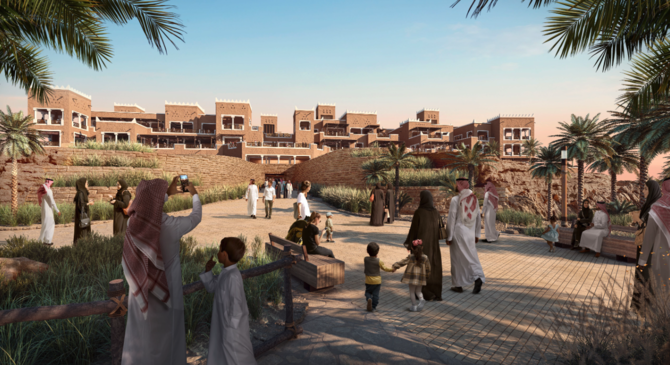
RIYADH: Saudi Arabia’s Diriyah Co. has shared plans for its inaugural mixed-use commercial office and retail development Zallal, set to launch in the Bujairi district during the first half of 2025.
This project will feature two low-rise office buildings with a combined leasable space of around 6,000 sq. m. Additionally, there will be 12 mixed retail and food and beverage outlets spread across about 8,000 sq. m.
Located next to the popular Bujairi Terrace, Zallal will benefit from proximity to a venue that attracts thousands of visitors daily.
The development is also located close to the recently completed Diriyah Art Futures and the soon-to-open Bab Samhan Hotel.
Jerry Inzerillo, group CEO of Diriyah Co, said: “We have been delighted with the hugely positive reception that Zallal has had from the commercial sector, and we are in advanced negotiations with international and local companies eager to benefit from the central location in the heart of Diriyah and the diverse range of accessible retail, F&B and office space available.”
He added: “With construction well underway, Zallal maintains the exciting momentum at Diriyah, and when open, will benefit from the thousands of daily visitors to Bujairi Terrace becoming the latest completed precinct in our rapidly developing masterplan.”
Mitsui says no decision yet on ADNOC LNG project tie-up after Nikkei report

TOKYO: Japan’s Mitsui & Co. said on Tuesday nothing has been decided on a liquefied natural gas project in the UAE, after the Nikkei reported it was teaming up with Abu Dhabi National Oil Co. on it.
The Nikkei reported ADNOC would have a stake of around 60 percent and Mitsui 10 percent of the $7 billion LNG project at Ruwais, adding Mitsui’s investment is estimated to be several tens of billions of yen.
Other oil majors Shell, BP and Total Energies are also expected to invest, the report said.
A Mitsui spokesperson said nothing had yet been decided when asked about the report. ADNOC, BP and Shell declined to comment. TotalEnergies did not immediately respond to a request for comment.
ADNOC has big ambitions in gas and LNG, which along with renewable energy and petrochemicals, it sees as pillars for its future growth.
Demand for natural gas soared as Europe scrambled to secure supplies to replace Russian gas in the wake of Moscow’s invasion of Ukraine last year.
The planned Ruwais LNG project, to the west of Abu Dhabi city, will help ADNOC reach its goal of doubling its LNG production capacity. It currently has liquefaction capacity of about 6 million metric tons per annum at its Das Island facility.
The Ruwais plant will have electric-powered processing facilities and run on renewable and nuclear grid power, making it one of the lowest carbon intensity LNG facilities globally, ADNOC has said. It will have two 4.8 mtpa LNG liquefaction trains when completed.
ADNOC said in March it had issued a limited notice to proceed for early engineering, procurement and construction on the Ruwais LNG project to a consortium led by Technip Energies and including JGC Corporation and National Petroleum Construction Co. A final investment decision is expected this year.
ADNOC has since last year signed several LNG supply deals, including two for LNG from the Ruwais project, expected to begin commercial operations in 2028.
ADNOC has eyed acquisitions of foreign companies in part to help boost its gas portfolio.
Pakistan eyes new IMF loan by early July, finance minister says
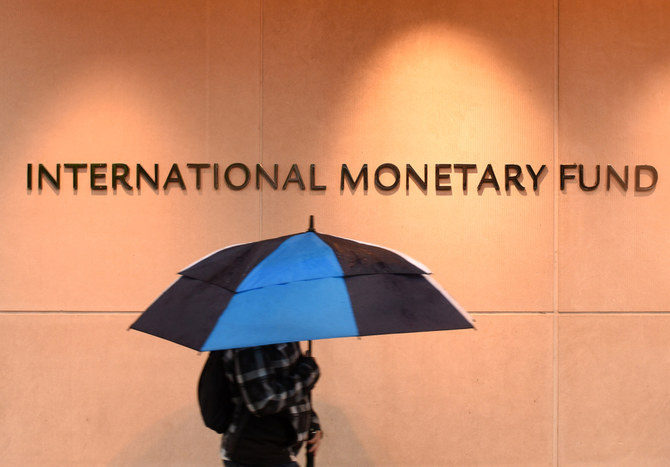
ISLAMABAD: Pakistan could secure a staff-level agreement on a new long-term larger loan with the International Monetary Fund by early July, its finance minister said on Tuesday, according to Reuters.
The country’s current $3 billion arrangement with the fund — which it secured last summer to avert a sovereign default — runs out in late April.
The $350 billion South Asian economy faces a chronic balance of payment crisis. The government is seeking a larger, long-term loan to help stabilize economic activity and financial markets so it can execute long-due, painful structural reforms.
If secured, it would be the 24th IMF bailout for Pakistan.
“We are still hoping that we get a staff-level agreement by June or early July,” Finance Minister Muhammad Aurangzeb told a conference in Islamabad.
He returned from Washington last week after leading a team to attend the IMF and World Bank’s spring meetings.
“We had very good discussions in Washington,” he said.
He said he did not know at this stage the volume and tenure of the longer program, although he has previously said that he was looking for at least a three-year bailout plan.
Both sides have said they were already in discussions for the new loan. A formal request, however, will be made once the current facility expires, with the IMF board likely to meet late this month to approve the second and last tranche of the current support scheme.
The economy is expected to grow by 2.6 percent in the fiscal year 2024, the finance minister said, adding that the inflation was projected at 24 percent, down from 29.2 percent in fiscal 2023. It touched a record high of 38 percent last May.
Aurangzeb said structural reforms would include increasing the government’s tax revenue-to-GDP ratio to 13 percent to 14 percent in next two or three years from the current level of around 9 percent, reducing losses of state-owned enterprises through their privatization, and better management of the debt-laden energy sector.




